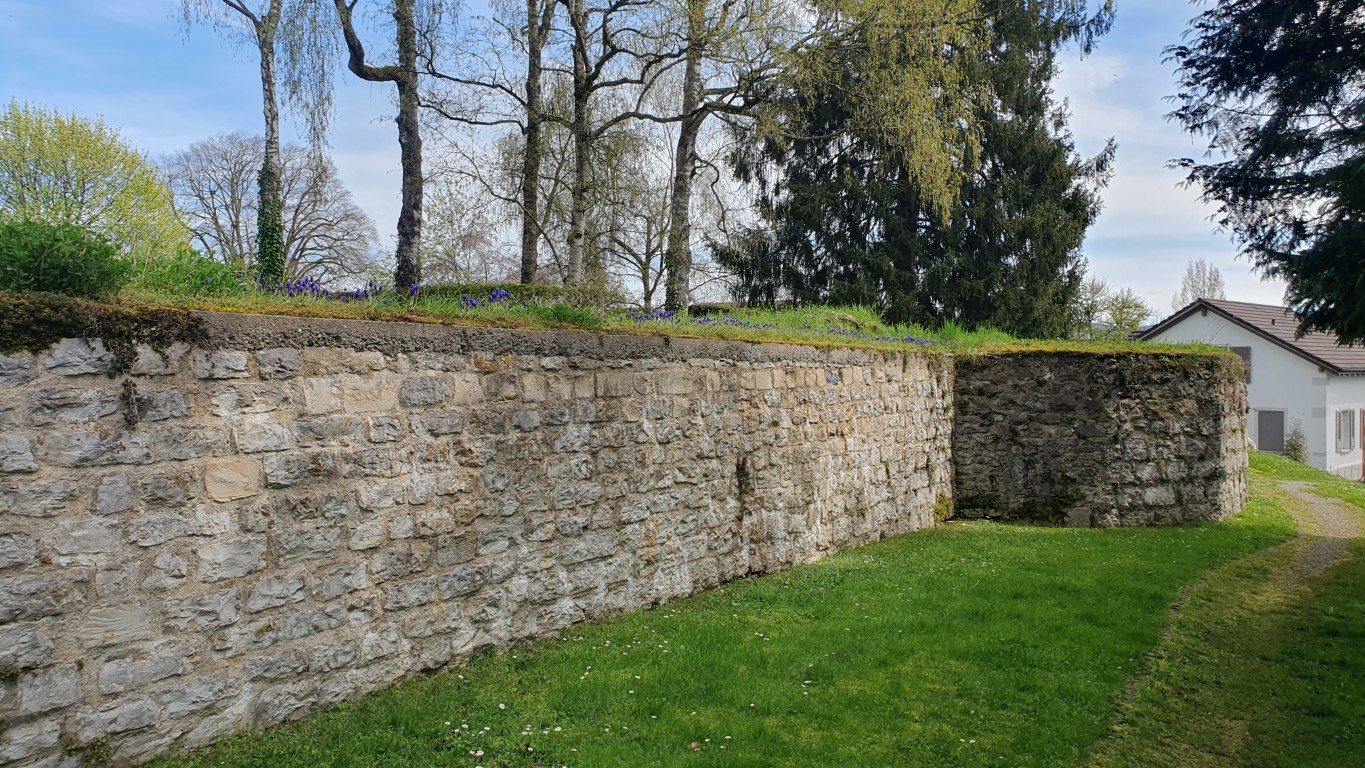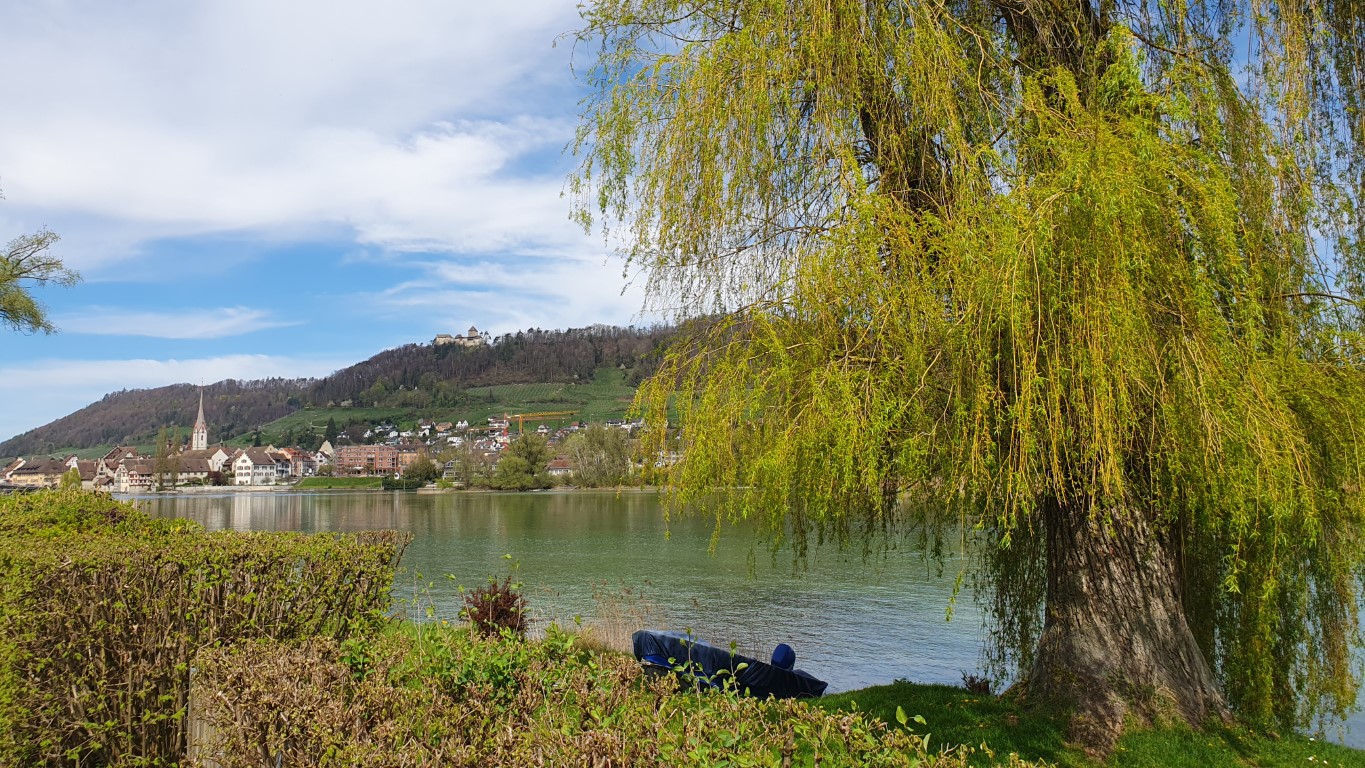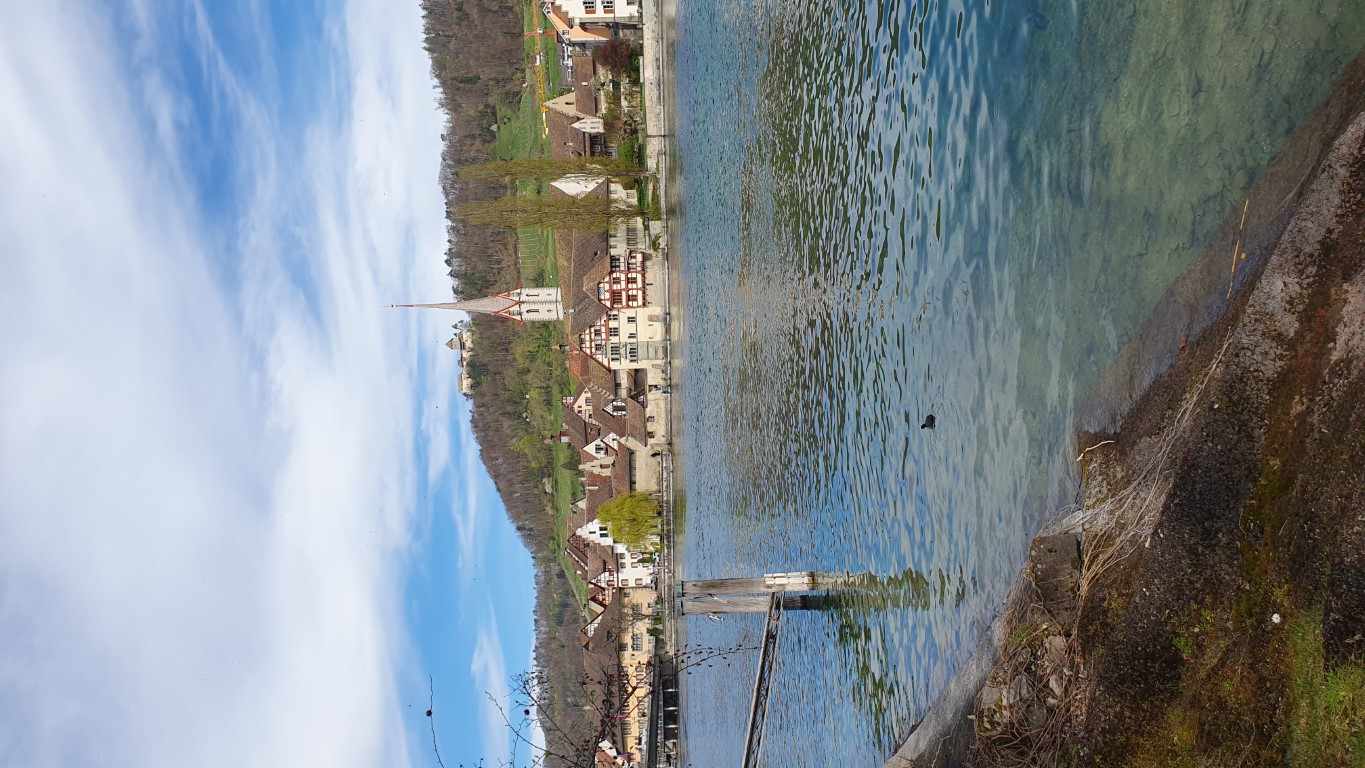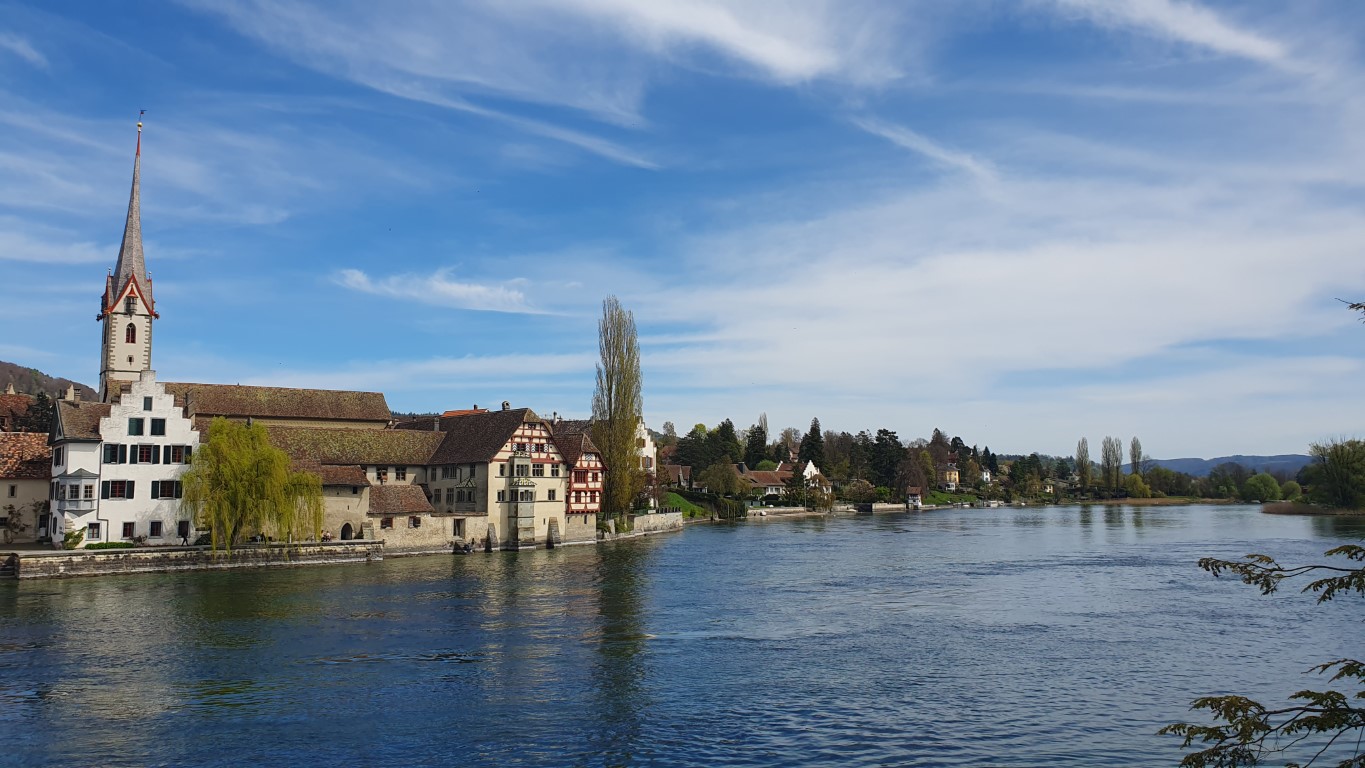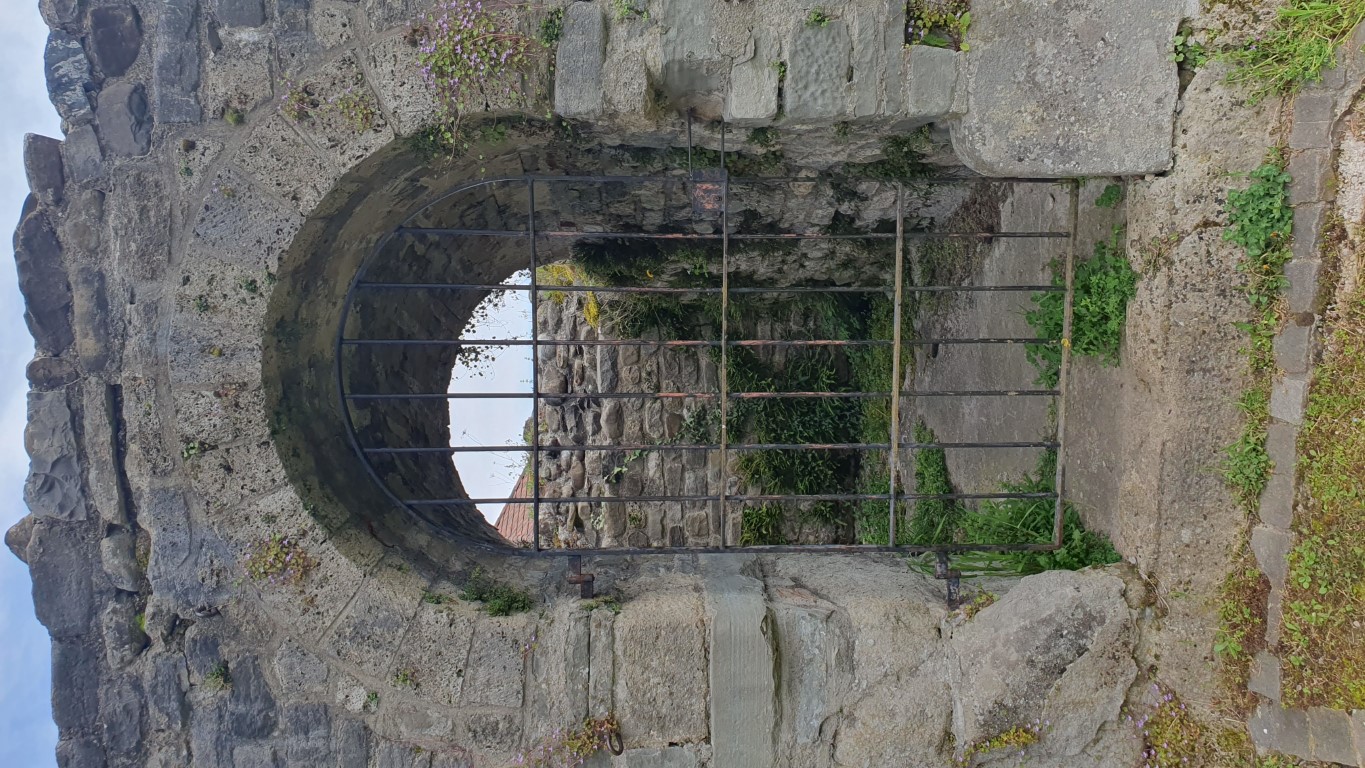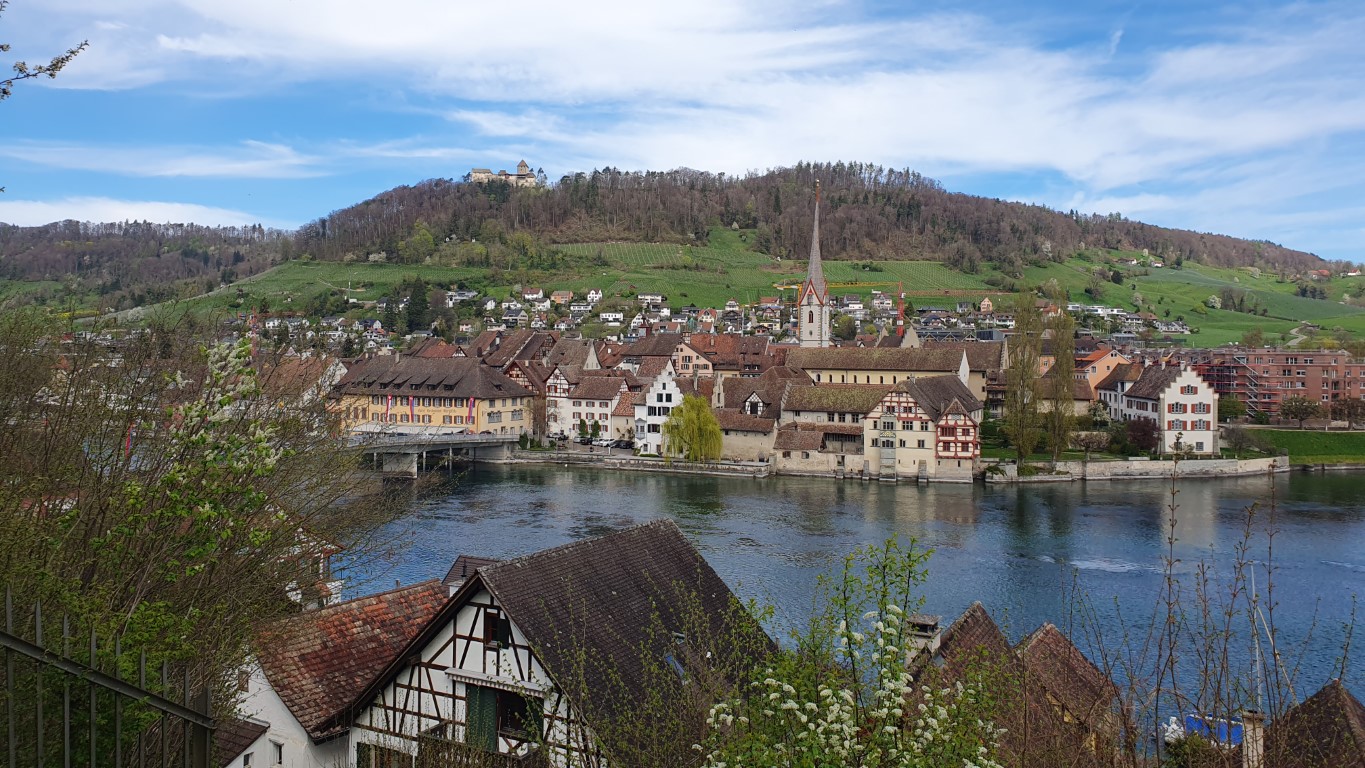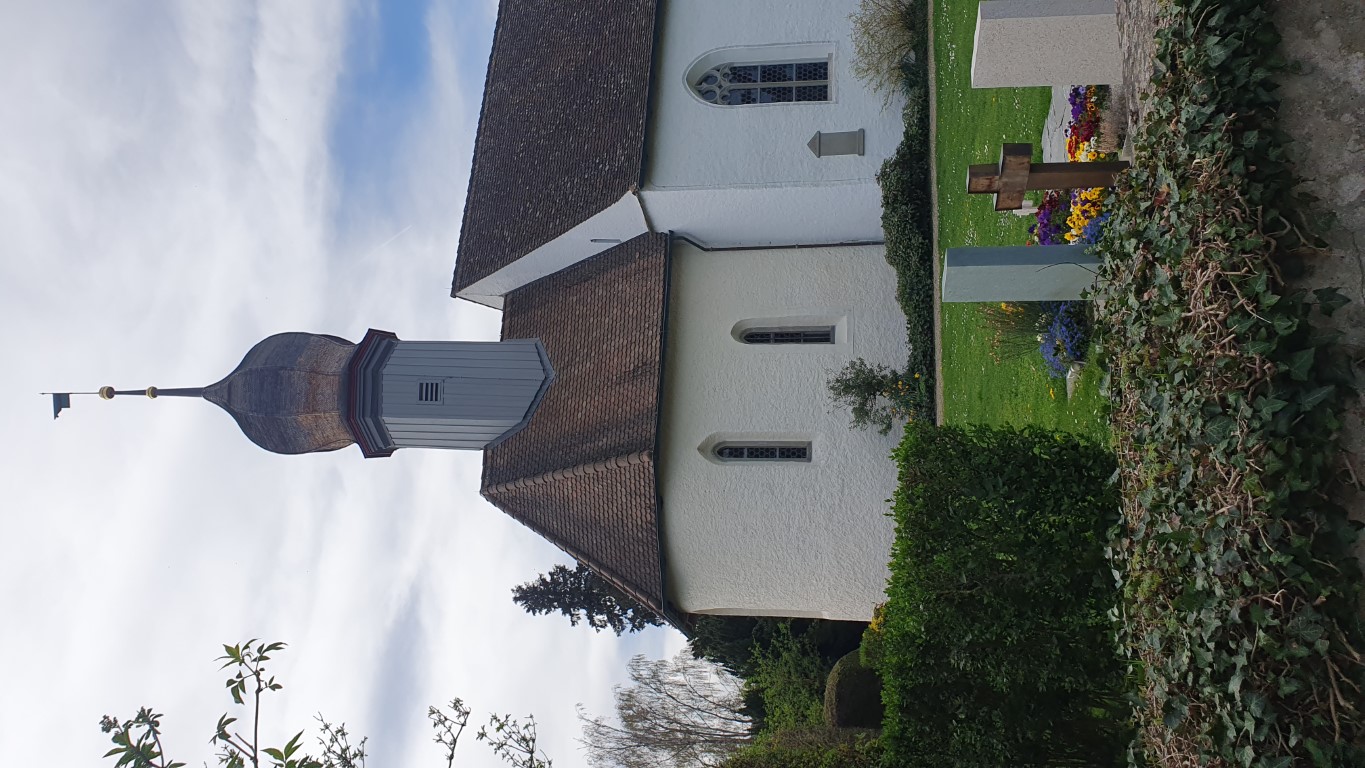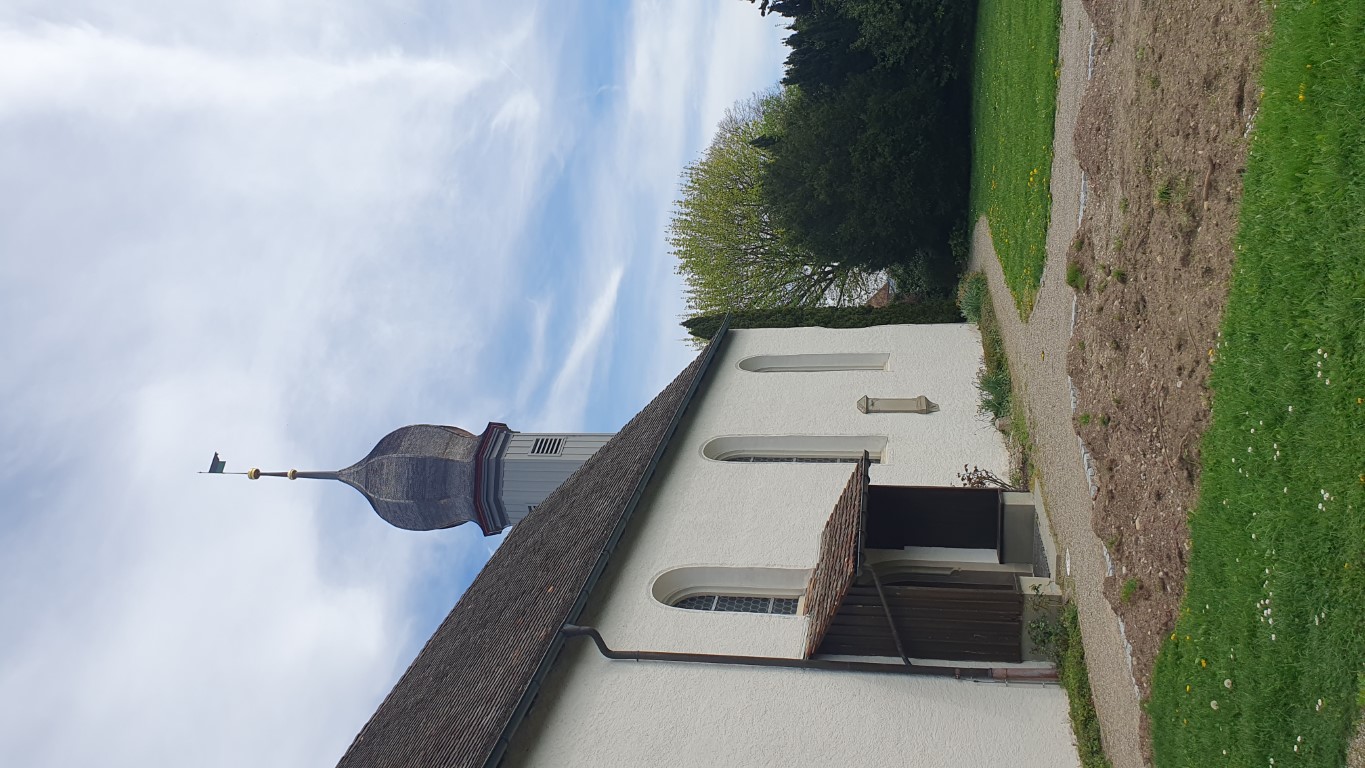In the medieval town of Stein am Rhein, which is often overlooked by many visitors, there is a hidden gem on the opposite bank of the Rhine: the Burg Church, the oldest and first documented church in the canton of Schaffhausen, sits on a hill and is dedicated to John the Evangelist and Baptist. Its history, both legal and structural, is full of changes and complications and it is embedded in the remains of the Roman fort of Tasgetium, which was built in the 3rd century.
The remains of the old walls of the fort still bear witness to the fact that the current church stands right in its centre. Archaeological excavations have revealed that Christian services have been held at this site, in the former late Roman fort of Tasgetium, for more than 1400 years.
For visitors, the Burg Church is a priceless discovery, particularly because of its impressive wall paintings in the choir. These works of art radiate with their sacred dignity and transport the viewer into the world of Christian salvation history, the Old and New Testaments. The wall paintings, dated shortly before 1420, tell scenes from the history of faith in 30 pictures in three cycles, starting with the story of creation and ending with events from the life of Jesus.
Particularly noteworthy is the depiction of the birth vision of the Swedish Princess Birgitta on the left choir wall. After her canonization in 1415 in Constance, this scene shows how Birgitta, mother of eight children, experienced the birth of Jesus in a vision on a pilgrimage to Bethlehem. Her visions were later recorded in several books and to this day her memory is venerated in the castle church of Stein am Rhein.
The fortress of Tasgetium and its history
Shortly before 300 AD, in response to the threat of the Alamanni invasions, the Tasgetium fort was built and formed an integral part of an extensive defense system along the Danube-Iller-Rhine Limes. According to a well-preserved building inscription, the fortress was built during the reign of Emperor Diocletian (284–305). Diocletian ruled the Roman Empire jointly with Maximian in a dual power and was supported by two sub-emperors from 293 onwards. The construction of the fort can therefore be dated between 293 and 305 AD, and it was probably built under the leadership of Constantius Chlorus, the sub-emperor for Gaul and the Rhine border.
In contrast to earlier forts, which were designed according to a simple scheme, in Late Antiquity, between about 284 and 568 AD, as at Tasgetium, robust stone walls with prominent towers were built to repel and bombard potential attackers. In addition, the interior space was reduced in size to reduce the attack surface and improve defense.
Today, the remains of the walls, especially parts of the south and east walls, of this Roman fort, which now forms the centre of St John's Church, are still preserved. The restored wall foundations, which lie next to the church, allow the layout of the diamond-shaped fortress with a side length of 88 × 91 metres to be reconstructed. The fortress was protected by four polygonal corner towers and additional towers on three fronts, with the main gate in the south flanked by two gate towers. Despite its comparatively small area of around 7,900 square metres, the fort was considered a robust defensive structure, even by late antique standards.
Access
The castle and the church are freely accessible.


